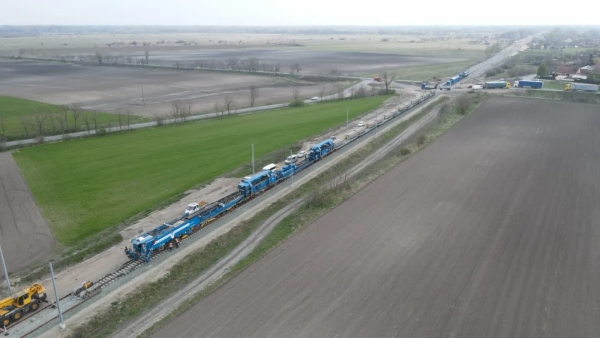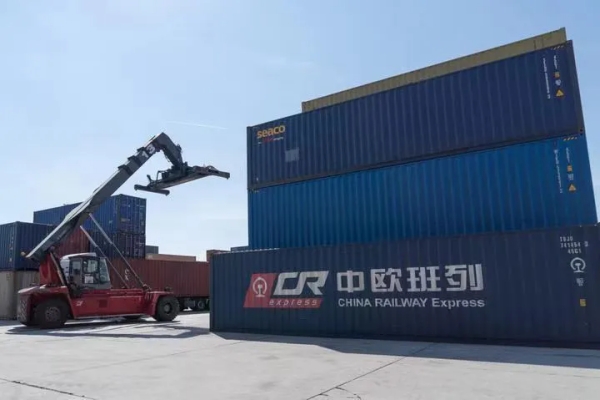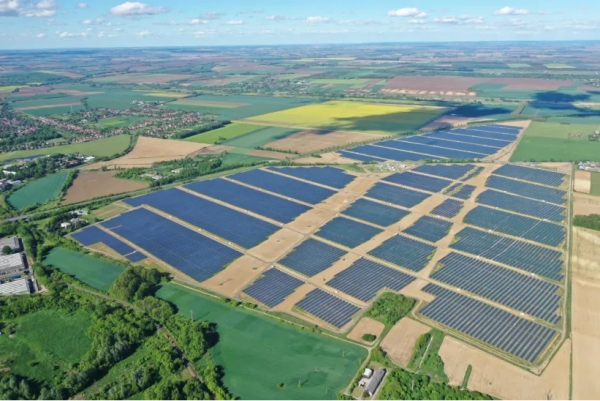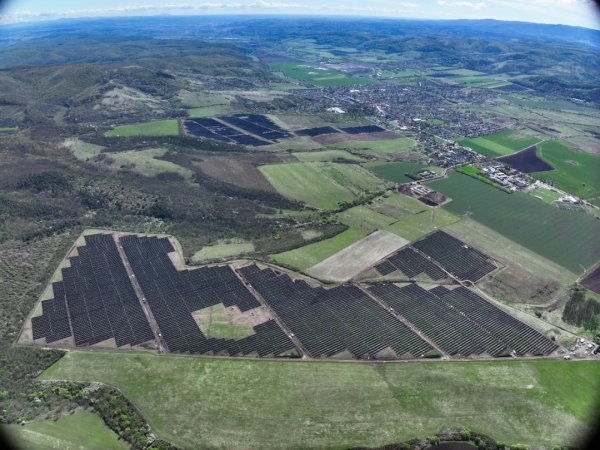Over the 75 years since the establishment of diplomatic relations, China and Hungary enjoyed a long-standing friendship based on mutual respect and trust, setting an example for a new type of international relations.
In recent years, the synergy between the Belt and Road cooperation and Hungary's Opening to the East strategy has injected strong vitality to the cooperation between the two sides.
Once completed, the Hungary-Serbia Railway will boost economic development along its route and enhance connectivity in Central and Eastern Europe. The China-Europe Trade and Logistics Cooperation Park in Budapest has become a key platform for business interaction between Chinese and European companies. In addition, numerous photovoltaic power plants developed, invested in and constructed by Chinese central state-owned enterprises (SOEs) are emerging across Hungary. The "Go global" of Chinese technologies, wisdom and construction is injecting new momentum into mutually beneficial cooperation between China and Hungary.
A Road of Friendship and Prosperity
The Hungary-Serbia Railway, connecting Belgrade of Serbia and Hungary’s Budapest, is a flagship project of the Belt and Road cooperation between China and Central and Eastern European countries. The project's Hungarian section spans 152 kilometers and is being executed by a consortium comprising China Railway No.9 Group Co., Ltd and China Railway Electrification Engineering Group Co., Ltd, both are subsidiaries of China Railway Group Limited, along with Hungarian partners. The Chinese side is responsible for 50 percent of the project's construction tasks.
Due to the construction in Hungary involving seven non-contiguous sections, including national parks and nature reserves, meeting environmental requirements became a significant challenge. Leveraging their extensive experience in domestic ecological protection from projects in China, the team met the environmental requirements set by the EU and Hungary.

Track laying site at Section 18 [Photo/sasac.gov.cn]
The project has implemented numerous special protection measures. Among the project's efforts, bird nests along the railway were relocated before construction and returned afterward. Additionally, tall trees have been planted on both sides of the railway to create a natural green barrier, supplementing traditional bird deterrent devices. New anti-electrocution devices have also been installed on electrified equipment to protect birds.
To the local residents, the Hungary-Serbia Railway is not only a symbol of the friendship between China and Hungary, but also a road to happiness.
The construction of the Hungary-Serbia Railway has created opportunities for cooperation between Chinese and Hungarian companies. The demand for localized positions, including engineers and machinery operators, has energized the local labor market. As of May 2024, the project had employed nearly 200 Hungarian project management and technical personnel and collaborated with over 100 local subcontractors and suppliers.
New Horizons for China-Europe Trade
At the Logistics Park in the Csepel Port in Budapest, many goods are transported from China via the China-Europe Railway Express or the "Air Silk Road" air cargo route. After a brief period of storage, these goods are dispatched to various European countries.

Containers at the Logistics Park in the Csepel Port [Photo/sasac.gov.cn]
Established in November 2012, the China-Europe Trade and Logistics Cooperation Park is China’s first trade and logistics-oriented overseas economic cooperation zone in Europe. It serves as a two-way interactive platform for trade exhibition and transactions, logistics transportation and warehousing, and industrial investment and cooperation, showcasing the wisdom of Chinese central SOEs during its construction.
As a national high-end think tank and a central SOE engaging in engineering consulting, China International Engineering Consulting Corporation proposed a model that integrates functions such as product exhibition, transportation, warehousing, distribution, information processing, and circulation processing into a cohesive system, creating a convenient and efficient distribution network covering major cities in Europe and China.
Currently, the park has completed projects like a commodity trading and exhibition center and the Port of Cepel Logistics Park.
In 2023, the China-Europe Railway Express operated 17,000 trains and transported 1.9 million TEUs, a more than 210-fold increase from the 80 trains in 2013.
Green Development via Cooperation
In the southwest Hungarian city of Kaposvár, the Kaposvár 100 MW photovoltaic (PV) power plant has become a new highlight of the city, which used dubbed as "City of Flowers".
Currently, about 30 percent of Hungary's electricity is imported. To diversify its energy sources, the Hungarian government has been developing solar energy. In June 2019, Genertec International Holding Co., Ltd., a subsidiary of China General Technology (Group) Holding Co Ltd (Genertec), invested in and built a 100 MW PV power plant in Kaposvár. Since its operation in 2021, the plant has generated over 140 million kWh of electricity annually, saving 45,000 tons of standard coal and reducing carbon dioxide emissions by 120,000 tons each year.

The Kaposvár 100 MW Photovoltaic Power Plant [Photo/sasac.gov.cn]
Genertec has carried a series of environmentally friendly measures, such as installing water retention channels to reduce soil erosion from rainwater and using screw pile PV mounts.
Genertec has invested in the Tiszaújváros 54 MWp PV power plant in northeastern Hungary, which is expected to generate an average of 75 million kWh annually, saving around 30,000 tons of standard coal and reducing carbon dioxide emissions by 70,000 tons each year. Other projects include the MET 80 MWp PV plant and the Tapolca 50 MW PV plant.
The Tokaj 197 MW PV project was constructed by Shanghai Electric Power Co., Ltd, a subsidiary of State Power Investment Corporation following the Victor 132 MW PV project connected to the grid on May 7, 2024. This boosts Hungary's clean energy use and supports local employment and economic development.

The Hungary Tokaj 197 MW Photovoltaic Power Plant [Photo/sasac.gov.cn]
As the China-Hungary relationship has been elevated to an all-weather comprehensive strategic partnership for the new era, Chinese central SOEs will deepen practical cooperation across various fields and contribute to a new chapter in China-Hungary friendship and collaboration.
(Executive editor: Zhu Zeya)